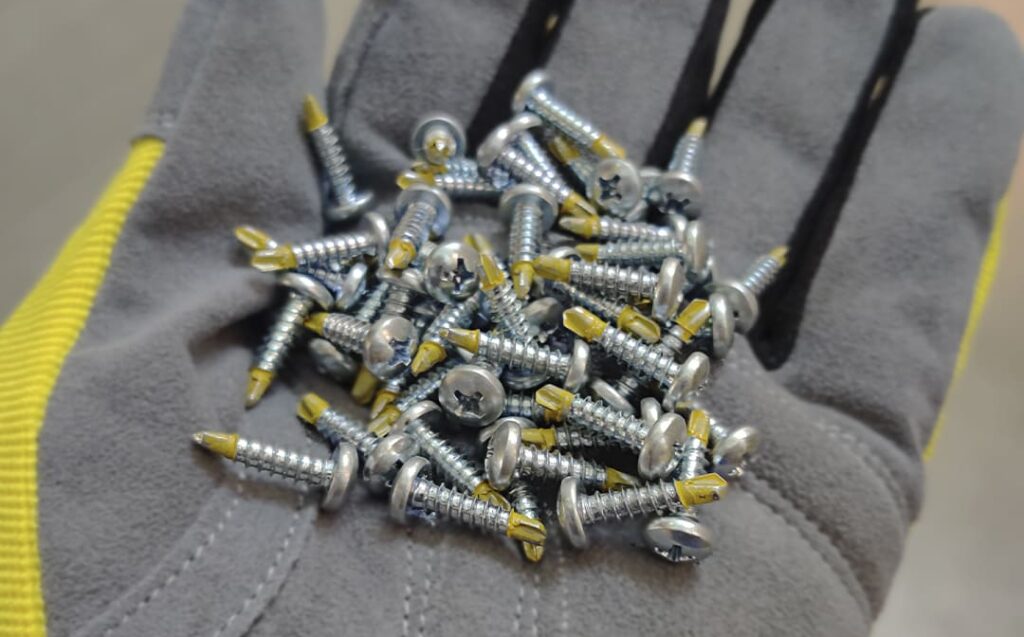People often confuse the terms “self-tapping” and “self-drilling” as if they are the same, but in fact, they refer to two very different types of actions. The same can be said for screw types: there are self-drilling screws and self-tapping screws.
To obtain good results in construction and other related fields, it is very important to understand the difference between self-tapping and self-drilling.
Differences between self tapping and self drilling
The following article we will explain the main characteristics of each type of screw. This will help to better understand the differences between self-tapping and self-drilling.
Self-tapping screws can be described as tapping screws although they are also known as sheet metal screws. Today, we can find a wide range of self-tapping screws for different base materials such as sheet metal, wood or plastic.
These screws cannot pierce metal and a pilot hole is required to be pre-drilled prior to installation. A pilot hole is created using a drill bit that is slightly smaller than the screw and the screw threads strike the metal or wood as the screw is installed.
The most common uses of self-tapping screws:
– Fixing metal brackets into ply and timber
– Securing thin gauge sheet metal in 1 and 2 layers
– Fastening aluminum sections together and into screw flutes.
– Inserting screws into plastic housings.
Self-drilling screws are also self-tapping, but the difference from self-tapping is that they have a drill-shaped tip. It can be drilled directly on the base material. Self-drilling screws have been designed for a wide variety of applications, such as metal-to-metal and metal-to-wood fastening.
Another difference between self-drilling and self-tapping is that self-drilling does not require a pilot hole or pre-drilled hole to be placed. This feature speeds up installation time, reduces cost and the need for additional bits. This added functionality and cost-saving feature makes self-drilling screws the clear choice for metal building construction.
The most common uses of self-drilling screws:
– Steel framings
– General construction
– Metal roofing and cladding
– Sheds/garages/carports
Self drilling screw sizes chart
Self-drilling screws can be made of stainless steel or carbon steel, however stainless-steel screws only can drill soft metals like aluminum.
Check out our range self-drilling screws sizes chart:
Code
Head
Recess/Socket
Material/coating
Material to be drilled
7504N

Pan
PH
Steel/White zinc plated, black zinc plated or white lacquered
Aluminium / Steel
7504P

Countersunk
PH
Steel/Zinc plated, black zinc plated
Aluminium / Steel
7504K

Hexagonal
Socket nut
Socket nut
Aluminium / Steel
FST

Low
PH
Steel/White zinc plated, black zinc plated or white lacquered
Aluminium / Steel
CET

Extra-flat
PH
Steel/White zinc plated, black zinc plated or white lacquered
Aluminium / Steel
SIT A85S

Pan
SIT
Steel/Zinc plated
Aluminium / Steel
75HA

Pan + Washer
PH
Steel/Zinc plated, black zinc plated
Aluminium / Steel
BTT

Mushroom
SIT
Steel/Zinc flake coated
Aluminium / Steel
- Self-drilling screw DIN 7504N
- Self-drilling screw DIN 7504P
- Self-drilling screw DIN 7504K
- Self-drilling low head screw FST
- Self-drilling screw extra-flat head CET
- Self-drilling screw pan head SIT A85S
- Self-drilling screw washer head 75HA
- Self-drilling screw mushroom head BTT
Self tapping screw sizes chart
We can find a wide range of self-tapping screws that can be installed in different base materials such as sheet metal, wood or plastic. Each design has been developed to enhance the performance of the screws according to their base material.
Check out our range self-tapping screws sizes chart:
Code
Head
Recess/Socket
Material/coating
Material to be drilled
7981

Pan
PH
Steel/Zinc plated, black zinc plaed, white lacquered
Aluminium / Steel
7982

Countersunk
PH
Steel/Zinc plated, black zinc plaed, white lacquered
Aluminium / Steel
7660

Hexagonal
Socket nut
Steel/Zinc plated
Aluminium / Steel
FS

Low
PH
Steel/White zinc plated, black zinc plated or white lacquered
Aluminium / Steel
CE

Extra-flat
PH
Steel/Zinc plated, black zinc plaed, white lacquered
Aluminium / Steel
7049

Pan
SIT
Steel/Zinc plated, black zinc plated
Aluminium / Steel
CH88H

Pan + Washer
PH
Steel/Zinc plated, black zinc plated
Aluminium / Steel
BTN

Mushroom
SIT
Steel/Zinc plated
Aluminium / Steel
- Self-tapping screw DIN 7981
- Self-tapping screw DIN 7982
- Hexagonal screw DIN 7660
- Self-tapping low head screw FS
- Self-tapping screw extra-flat head CE
- Self-tapping screw pan head SIT 7049
- Self-tapping screw washer head CH88H
- Self-tapping screw mushroom head BTN
Can you use self drilling and self tapping together
As you may have noticed, there are significant differences between self-tapping and self-drilling screws. A self-drilling screw creates its own hole as it drives. They are useful, above all, for metal fixings.
In contrast, if you want to use a self-tapping screw, you must make a hole with the appropriate drill bit first, and then insert the screw with the assistance of a screwdriver or drill.
Before selecting a particular type of screw, you need to consider what it will be used for, and then what type of material it will be used on. As we have already seen in the previous lines, each type of screw has its own characteristics and they are designed to work with one or another type of material.
We invite you to explore our extensive range of screw products.


